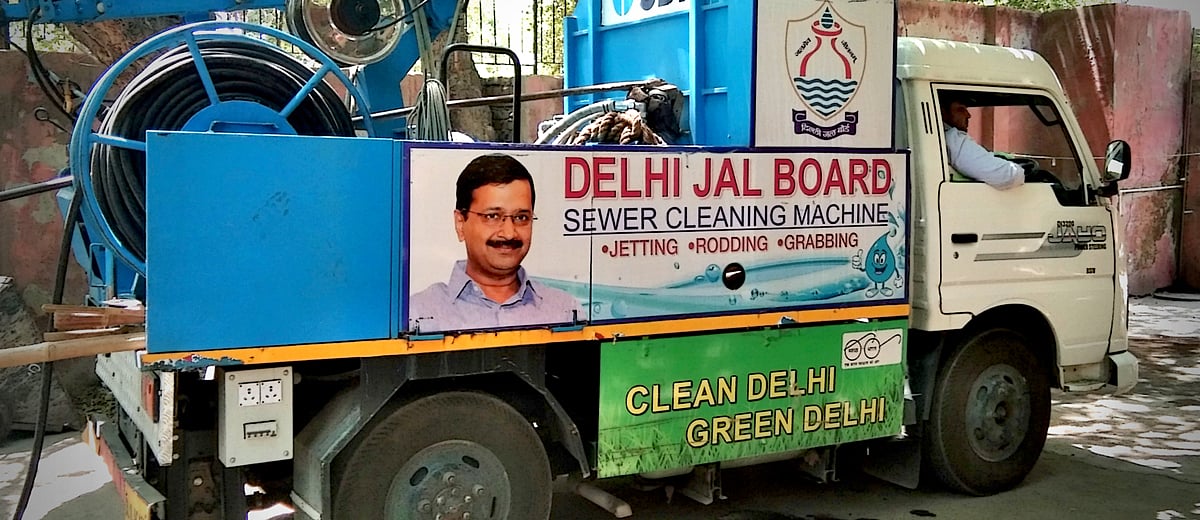Why does India still not have a database of manual scavengers?
How can the government plan to address manual scavengers if it does not know who they are?
It’s been 28 years since India took the first step towards banning manual scavenging. Yet, in 2021, there are more than 10 lakh manual scavengers in the country, and the central government needs to immediately identify who they are.
To begin with, the number of manual scavengers must be correlated with the existing sanitation infrastructure. According to the 2011 census, there were about 26 lakh dry latrines in India where human excreta is removed physically by a person.
Even after many of these latrines were demolished in cities, the situation remains unchanged in semi-urban and rural areas. According to data from the Rehabilitation Research Initiative, 80 percent of India’s dry latrines are found in Uttar Pradesh, West Bengal, and Jammu and Kashmir. However, these surveys are not absolutely accurate. Settlements outside cities are largely excluded and the sample sizes of the surveys are small. If a survey is conducted across only 194 cities, how can it reflect the exact number of manual scavengers in the country?
And if dry latrines are still a reality, who is maintaining them?
At present, India has 50 lakh sanitation workers of whom over a third have done manual scavenging at some point. Even after the passage of the Prohibition of Employment as Manual Scavengers and their Rehabilitation Act, there are still around 15 lakh manual scavengers in India, of whom over 70 percent are women, according to 2019 data from the Rehabilitation Research Initiative. The argument that the mechanisation of sewage cleaning will be the next step can only sustain if the government knows to whom it must give these machines.
Additionally, benefits like direct cash assistance can only be provided if there is a direct database of manual scavengers. One reason why the government has been unable to prepare such a database is because the importance given to building new toilet infrastructure is not given to the people forced to maintain such infrastructure. So, when deaths happen in septic tanks, the government has to rely on information from non-profit organisations because it has no knowledge of who has been hired by contractors to clean the tanks.
If the government doesn’t know who the manual scavengers are, then their subjective and evaluative rehabilitation also becomes a distant reality. Even if we leave aside rehabilitation, the non-recognition of such work makes the system so complex that these deaths become the murder of sanitation workers by the government, because there is no safeguard and no exit.
Last year, the government’s call for mechanisation of sanitation work was answered by many states. In light of this, the central question is: why has there been no comprehensive, state-wise study of the different categories of sanitation workers and manual scavengers? If India’s women are scavenging excreta in abandoned toilets, and sanitation workers are picking up animal carcasses from the streets, don’t they become manual scavengers? Here, the need for verification can be solved by visiting these insanitary latrines with the very sanitation workers who clean them. Yet, no effort has been made to do so.
We cannot forget that after the Employment of Manual Scavengers and Construction of Dry Latrines Prohibition Act was introduced in 1993, different categories were added as recently as 2013. It took the law 10 years to recognise loopholes and expand the definition to include persons employed in cleaning septic tanks, open drains, and railway tracks.
We also need to ask how the government plans to eliminate dry latrines in remote areas if it does not even know where they are located. How has the government responded to sewer deaths after 2013? What does it have to say about the difference between budget allocation and expenditure on the ground on the Self Employment Scheme for Rehabilitation of Manual Scavengers? How will it eradicate manual scavenging if there is no understanding of the ills of caste and discrimination? Both the “open defecation free” tag and non-recognition of manual scavengers by state governments go hand in hand in reality.
How will it address manual scavengers if it does not know them? The manual scavengers of India could not care less about the open defecation free declaration when it continues to burden them.
Pragya Akhilesh is the national secretary of Bhim Safai Karmachari Trade Union.
 200 sewer machines: Is the Delhi Government’s fight against manual scavenging working on the ground?
200 sewer machines: Is the Delhi Government’s fight against manual scavenging working on the ground? How an elderly couple lost both their sons to manual scavenging
How an elderly couple lost both their sons to manual scavenging